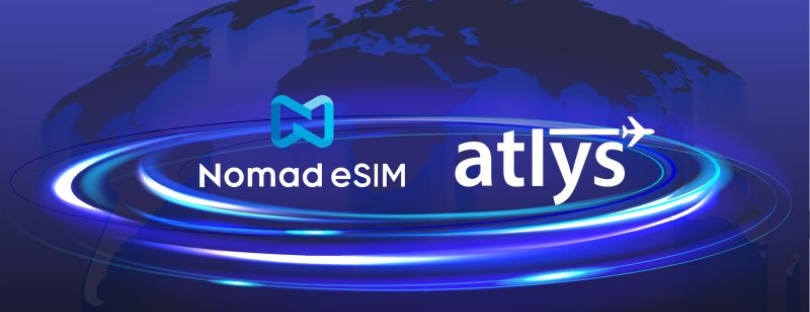
From Awareness to Activation: Mapping the eSIM Customer Journey — and Where It Breaks
So, you’ve heard the buzz about eSIMs — they’re digital, they’re convenient, they’re the future. No more fumbling with tiny plastic chips or hunting down a SIM card kiosk when you land in a new country. It all sounds perfect. And yet… customers still get stuck. A lot.
This post walks through the eSIM customer journey — from the moment someone hears about eSIMs to that magical moment when they successfully activate it on their device. We’ll break down each stage, point out where the journey usually breaks, and why even the most tech-savvy users sometimes abandon ship.
Let’s dive in — honestly, casually, and without the sugarcoating.
Stage 1: Awareness – “Wait, what’s an eSIM?”
The journey starts here. Someone is Googling how to avoid roaming fees, or scrolling through a Reddit thread on travel hacks, and bam — eSIMs enter the chat.
🧠 What customers experience:
Curiosity. Confusion. A bit of skepticism. “So it’s like a SIM card, but… not?” They might land on a blog post, TikTok, or a product page explaining that eSIMs let you install mobile data plans digitally, no physical SIM needed. It sounds slick, but they’re unsure if their phone even supports it.
🚨 Where it breaks:
- Tech jargon overload: eUICC, IMEI, APN settings — this stuff kills interest fast.
- Assumed knowledge: Brands forget that for many users, this is their first time hearing about eSIMs.
- Trust issues: “Is this safe? Is this legal? Will my phone explode?” (Real questions.)
- Carriers aren’t helping: Even mobile operators — the ones that should be educating users — often bury eSIM info in obscure FAQs or lock it behind expensive postpaid plans. Many customers still have never heard of eSIMs from their own provider.
✅ Fixes that help:
- Clear, human-friendly content. (“An eSIM is just a digital SIM card. No swapping, no plastic, just download and go.”)
- Instant compatibility checkers. Let people type in their phone model and get a yes/no.
- Social proof. Reviews, case studies, even influencer demos help bridge the trust gap.
Stage 2: Consideration – “Should I try this?”
Now they’re interested. They understand the benefits — no roaming charges, instant activation, multiple plans on one device. They’re intrigued, but cautious.
🧠 What customers experience:
They’re comparing providers. Some offer 1GB for €4.99, others have unlimited options. They’re not just looking at price — they want to know will this work where I’m going, and how quickly can I use it?
🚨 Where it breaks:
- Overwhelming choice: Too many plans, not enough context. “Which one do I need for two weeks in Thailand?”
- Hidden limitations: Some plans don’t allow hotspot use, or don’t work on iPhones — but that’s in the fine print.
- Device confusion: Just because your phone supports eSIM doesn’t mean it works with every provider. Some Android models, especially Samsung and Pixel, are region-locked or firmware-limited — meaning users might not be able to install third-party eSIMs at all.
- Doubts about support: “What if I have a problem and I’m already abroad?”
✅ Fixes that help:
- Use-case filters. Let users sort by destination, travel dates, and device.
- Transparent plan comparisons with real-time customer ratings.
- Visible customer support (live chat or WhatsApp > email forms).
- And tools like the Best eSIM Finder— which let you instantly compare over 100 providers by country, price, speed, and features — cut through the noise and help users make smarter, faster decisions.
- Device-specific compatibility tips and warnings.
Stage 3: Purchase – “Alright, I’m doing this.”
This is the moment of truth. They’re ready to buy. But now it’s up to the provider not to mess it up.
🧠 What customers experience:
Click, select, checkout. Or so they hope. This should be the easy part.
🚨 Where it breaks:
- Unexpected friction: Being forced to create an account, confusing checkout pages, or limited payment methods.
- Unclear next steps: “What happens after I pay? When do I get the eSIM? How do I install it?”
- Privacy concerns: Sharing passport details or selfies for KYC verification may feel invasive or suspicious.
- Regulatory roadblocks: In some regions — like India or parts of the Middle East — strict ID checks, data laws, or outright bans on third-party eSIMs complicate the process and slow down purchases significantly.
✅ Fixes that help:
- Guest checkout options and clean UI.
- Upfront explanation of the process: “After payment, you’ll receive a QR code to scan. That’s it.”
- Keep KYC steps minimal — or at least explain why you need that info and how it’s protected.
- Clear policy pages about supported regions and limitations.
Stage 4: Activation – “Ugh, why won’t this work?”
You’d think the hardest part is over, right? Nope. This is where most users drop off. Because activation is where everything can fall apart.
🧠 What customers experience:
They get a QR code, maybe a long string of numbers (SM-DP+ address, anyone?), and instructions that are… vague at best. They’re excited but nervous. They’re not sure if they should delete their current SIM. They’re not sure if it’s working. They’re not even sure who to contact for help.
🚨 Where it breaks:
- Confusing instructions: Especially on Android, where steps vary by manufacturer and OS version.
- Lack of feedback: No confirmation if activation was successful. No signal? No clue.
- Installation errors: Users scan the QR code twice, delete it accidentally, or don’t know to turn roaming ON for the eSIM to work.
✅ Fixes that help:
- Interactive setup guides tailored by device.
- A post-purchase onboarding email with video tutorials.
- Real-time troubleshooting via chat or chatbot (“No signal? Let’s check if roaming is enabled.”)
Stage 5: Use – “Okay, this is awesome.”
Once the eSIM is live and the user is connected abroad, magic happens. They’re posting, navigating, streaming, and silently thanking past-them for figuring this out.
🧠 What customers experience:
Relief. Empowerment. “I’m never buying a physical SIM again.”
🚨 Where it breaks (rarely):
- Unexpected data throttling.
- Roaming doesn’t kick in automatically.
- No way to monitor usage.
✅ Fixes that help:
- Dashboards or mobile apps to check data balance and top up.
- Push alerts when nearing data limits.
- Simple upgrade options without reinstallation.
What This Journey Teaches Us
Here’s the raw truth: most eSIM journeys don’t break because of bad tech. They break because of bad communication, hidden limitations, or frustrating setup processes.
Customers aren’t stupid — they’re cautious. They’re not afraid of trying something new, they just don’t want to feel stupid while doing it. They want you to walk them through the process with the same energy as a tech-savvy friend on WhatsApp, not like an airline safety manual.
And the biggest insight? The brands that win at eSIM aren’t necessarily the ones with the best prices. They’re the ones that respect the journey — smoothing every bump along the way from first click to first connection.
Final Thought
eSIM adoption is growing — fast. But it’s not inevitable. To turn awareness into activation (and happy repeat users), providers need to map the real customer journey, with all its doubts, friction, and missed steps. Then design every moment of the experience — not just the checkout button.
Want more people to complete the eSIM journey? Make it feel less like a solo hike through tech hell, and more like a guided walk through a well-lit park.









